Hibiscus: what is and how it looks, rules of care

Fans of exotic flora are well aware of the amazing plants - hibiscus. This vast genus includes wild and cultivated shrubs, grasses and even trees. In indoor and outdoor plant growing, some types of hibiscus are very popular, which, during flowering, simply amaze the imagination with the brightness and saturation of colors.
What types of hibiscus are of interest to flower growers, what are their features and how to care for these flowering plants? Let's try to figure it out.
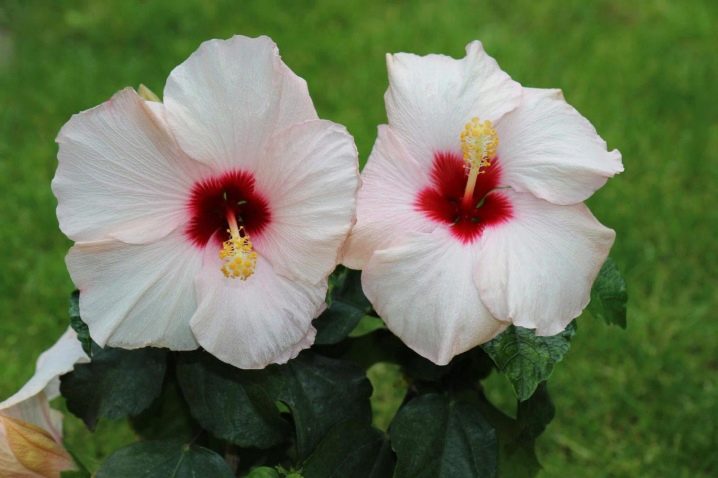
What it is?
Hibiscus, which also has another common name - "Chinese rose", is one of the most famous crops in horticulture and home floriculture. It is important to note that these plants have nothing to do with real roses, being representatives of the Malvaceae family. The genus of hibiscus includes both giant trees, reaching a height of 10-20 meters, and very small representatives of the tropical flora, not exceeding 15-20 centimeters.
Homeland of most types of hibiscus - tropics and subtropics. Wild representatives of this genus are widespread in the subtropical forests of Africa and Asia. They are also found in Europe, in the Transcaucasus and even in the Far East.
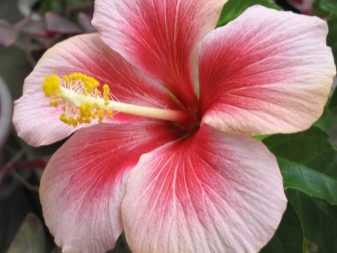
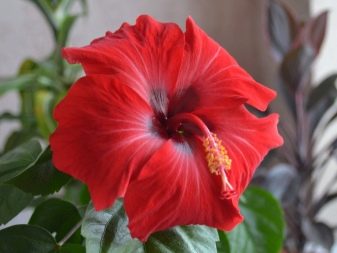
Many novice florists are confused by one more thing, a lesser known name for hibiscus is the flower of death. The origin of this name is associated with a number of ancient European signs. So, one of these signs says that if a plant suddenly bloomed during a dormant period, one should expect the death of someone from the inner circle. To avoid this sad event, the plant must be burned.
According to many signs, hibiscus is considered a harbinger of bad news. For example, one of the beliefs states: if a flower suddenly drops all the leaves, this may be a warning that one of the family members will soon get sick.
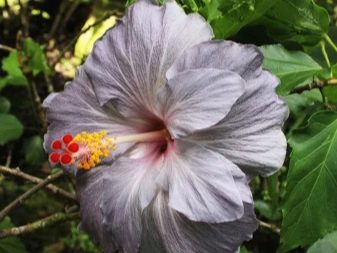
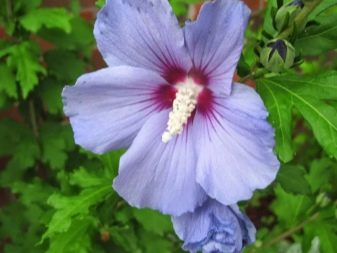
According to some signs, it is not recommended to grow hibiscus for married couples. It is believed that this flower can bring discord and conflict to the family. At the same time, other beliefs, on the contrary, argue that regularly blooming hibiscus attracts only joyful and happy events to the house. In addition, it is believed to bring good luck in business and promotes career advancement.
Be that as it may, but non-superstitious gardeners and florists are very supportive of these delightful representatives of the tropical world. During the flowering period, a tree or lignified hibiscus bush looks very exotic due to the rich bright color and unusual shape of the flowers. It is noteworthy that the flowers of almost all types of hibiscus they delight with their colors only one day, after which they fade. However, to replace wilted flowers, new buds immediately bloom, making the flowering seem very long, almost constant.
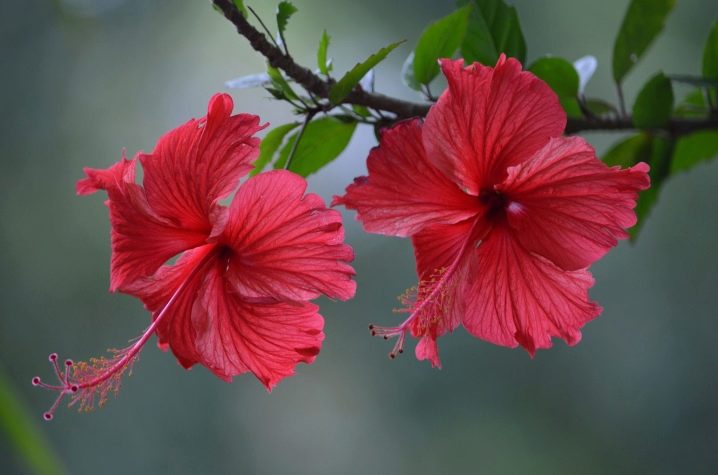
It is recommended to begin with indoor hibiscus for beginner flower growers planning to start breeding exotic plants. The most famous of these representatives of the world of tropical flora is Chinese rose - a variety of hibiscus that even a beginner can easily grow. The country of origin of this exotic is Southeast Asia.This plant is not too demanding on the conditions of detention, and therefore it can be kept not only at home, but also in a winter garden or even in a garden plot (in the warm season).
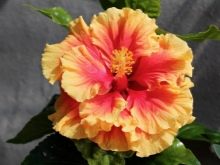
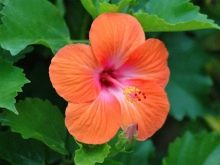
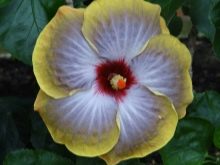
It should be borne in mind that hibiscus in nature exists (according to various sources) from 150 to 300 species, but only some of them are suitable for indoor and outdoor cultivation. For this reason, when planning to start growing such amazing plants, you should carefully study the description of the most suitable and interesting representatives.
Views
The shape, size and color of the luxurious hibiscus flowers depend on its species. To achieve abundant and long-lasting flowering from a plant, it is necessary to provide it with appropriate living conditions. For this reason, it is important to know what requirements this or that type of plant imposes on its content.
- Red-leaved hibiscus (also called sour hibiscus) - an elegant and not too whimsical plant, which is widely used in indoor floriculture. This species can be grown both at home and outdoors. This hibiscus variety has very showy foliage, which can range in color from pale red to ruby purple in color.
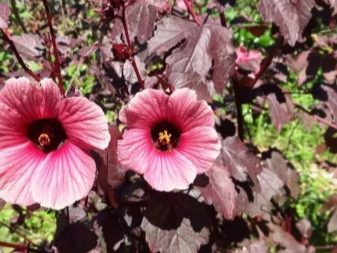
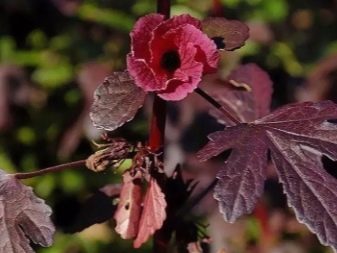
Red-leaved hibiscus blooms for about one month. The color of the flowers ranges from pink to wine red. Under favorable conditions, the size of flowers can reach 10 centimeters in diameter. In addition, the plant itself with proper care capable of reaching a height of 90-100 centimeters. In addition to the impressive decorativeness of red-leaved hibiscus, flower growers also note it increased resistance to diseases and pest attacks.
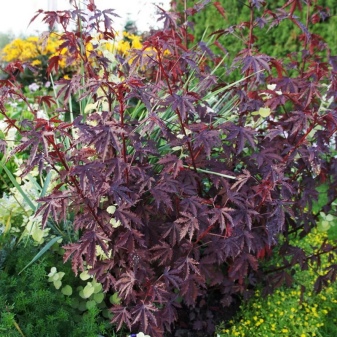
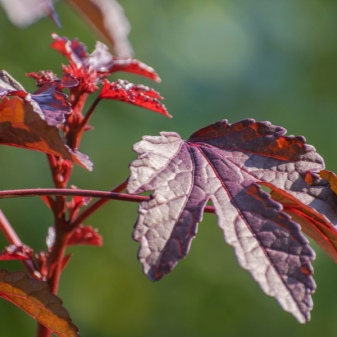
- Hybrid hibiscus - an unpretentious and very beautiful plant, the color of the flowers of which is striking in its diversity. The resistance to low temperatures, which this variety of hibiscus inherited from the original crops used in breeding, allows it to be grown not only at home, but also outdoors. During the flowering period, this street hibiscus takes on an extraordinary look thanks to its numerous and very large flowers, reaching 18-20 centimeters. Due to the unpretentiousness of the plant to the conditions of maintenance, growing it is possible even for novice gardeners.
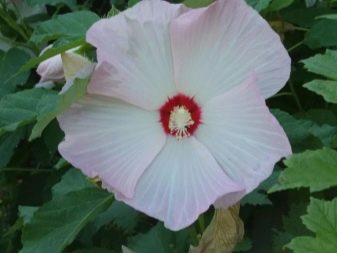
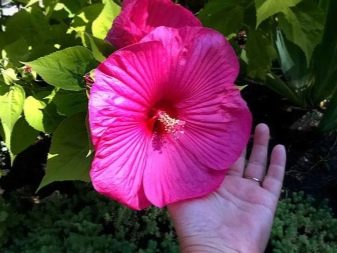
- Variegated variegated hibiscus - a spectacular houseplant with an amazing decorative effect. During the flowering period, this type of hibiscus is covered with large bright scarlet flowers that stand out against the background of emerald leaves with beige-red stains.
The flower is considered very demanding on air humidity. To provide him with the best conditions for keeping, it is required to maintain constant humidity in the room and regularly spray the plant. For the full development of this type of hibiscus with colorful leaves, abundant but soft lighting is also needed.
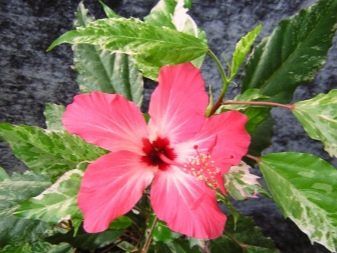
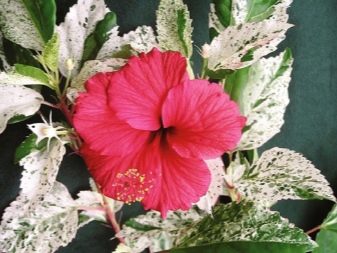
- Spread hibiscus - an evergreen bush representative of the Malvaceae family, the height of which can reach 2-2.5 meters. The plant has a strong, straight trunk, spreading branches, studded with thorns. During the flowering period, it is covered with numerous bright yellow flowers. Feels good outdoors.

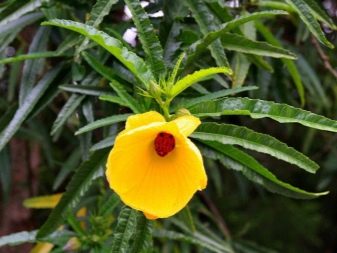
- Chinese rose - one of the most popular types of hibiscus, widely used in home crop production. It is appreciated by flower growers for its unpretentiousness, intensive growth and beautiful flowering. With age, the plant acquires a spreading crown, which gives it a special decorative effect. Under favorable conditions, this flower can grow up to 1-1.2 meters in height.
The Chinese rose looks very impressive during flowering. During this period, large (up to 10-12 centimeters in diameter) flowers of an unusual shape begin to form among its dark green glossy leaves. The color of the flowers depends on the characteristics of the hybrid being grown.It can be white, yellow, purple-crimson, bright scarlet. The flowers can be either regular or terry.

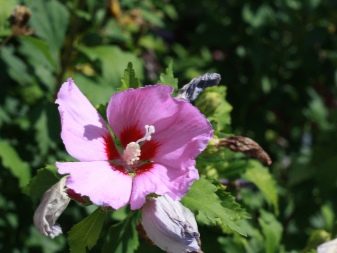
- Swamp hibiscus - a variety that has become widespread in both home and street crop production. When grown outdoors, this plant is capable of reaching a height of 2-3 meters. It is appreciated by gardeners for its abundant and long flowering, as well as for an extensive palette of colors.
Depending on the variety, hibiscus flowers can be deep red, purple-violet or lilac in color. With favorable care, the diameter of the plant's flowers can reach 12-15 centimeters.
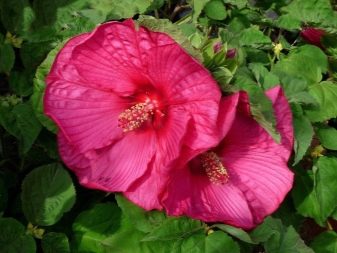
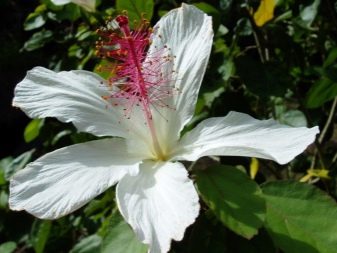
- Syrian hibiscus Is a very popular crop used mainly in outdoor gardening. Differs in increased resistance to temperature extremes. During the flowering period, the plant is covered with numerous large flowers, the color of which can be white, scarlet, crimson, purple. There are also varieties that have a two-color color of flowers.
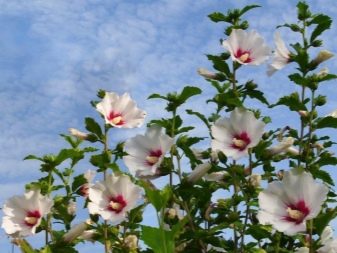

Home care
As evidenced by numerous reviews of gardeners, most types of hibiscus are unpretentious plants that are quite easy to care for. In order for a flower to please with constant lush flowering for a significant part of the year, it is necessary to provide it with optimal living conditions. For full development and long flowering, this plant requires:
- good lighting;
- regular watering;
- high-quality soil mixture;
- stable air temperature;
- sufficient level of air humidity;
- regular feeding;
- suitable pot.
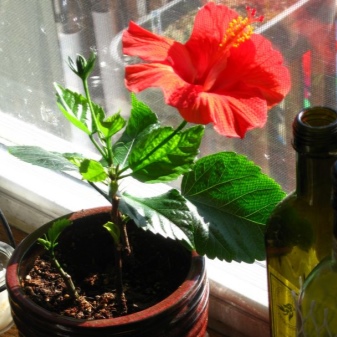

Illumination
So that the plant develops well, blooms stably and magnificently, he needs abundant but soft lighting... Florists recommend placing hibiscus pots on windowsills in the south, east or west of the house. When placing a flower on a windowsill in the northern part of the house, it is required to provide it with additional lighting. For this are used special phytolamps or fluorescent lamps.
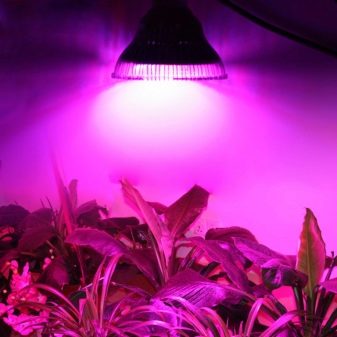
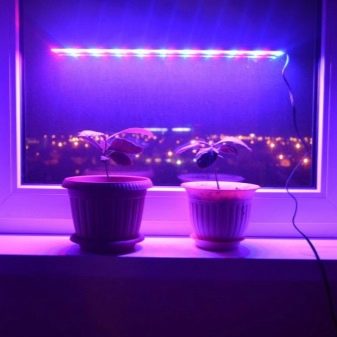
Being on the windowsill, the plant will stretch towards the light, so the pot needs to be turned regularly. This will ensure the uniform development of the crown, its proportionality and symmetry.
Some growers recommend during dormancy, place the plant in a cool and shaded place... However, this condition is not required, since at this time the flower is completely immersed in a state of sleep. The abundance of light during this period does not particularly affect the hibiscus and does not stimulate its awakening.

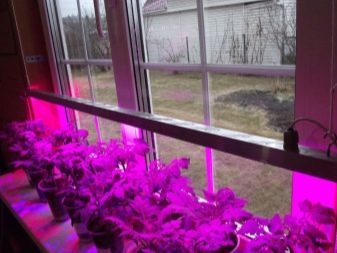
Regular watering
Hibiscuses need regular, abundant watering, without which they begin to wilt and hurt. During the hot summer period, the frequency of watering should be increased. It is necessary to water the plants with soft, settled water at room temperature. When watering with cold water, hibiscus can get sick, and during the flowering period, they can shed the formed buds. During flowering, plants are watered more often than usual.
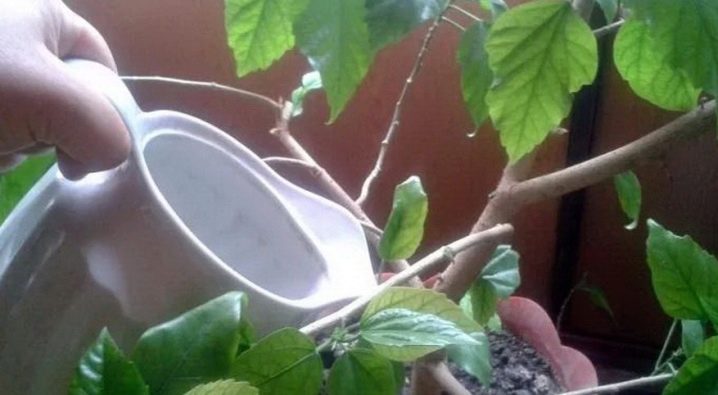
When watering, it is important to ensure that the entire earthen lump in the pot is saturated with water. 10-15 minutes after watering, excess water from the pot must be drained. The need for the next watering is indicated by the dried surface of the substrate.... Despite the fact that these plants are moisture-loving, they cannot be poured. With an excess of moisture in the soil mixture, the roots of the hibiscus begin to rot, which over time can lead to the death of the flower.
With the onset of autumn, the frequency of watering is reduced to 2-3 times a week. During the cold season and during the dormant period, the frequency of watering depends on the temperature conditions. If the plants are in a cool place, they are less watered.

High-quality soil mixture
For good growth and intense flowering, hibiscus requires a fertile soil mixture rich in macro- and microelements. Basic soil requirements for hibiscus:
- optimal acidity;
- looseness;
- ease;
- moisture and air permeability.
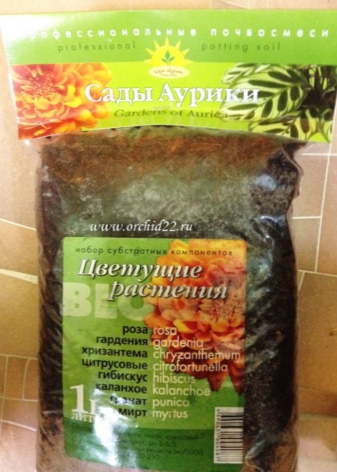
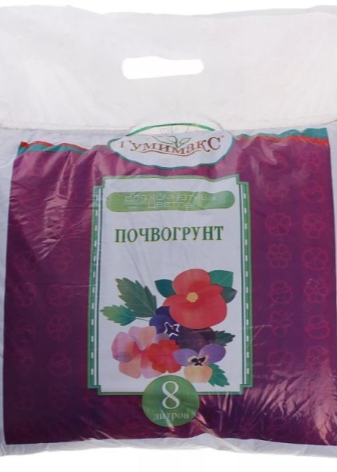
The most comfortable hibiscus feel in slightly acidic soils, whose acidity level ranges from pH 5-6. If the soil is too acidic, plants will not be able to fully absorb micro and macro elements from it. The soil mixture should be loose and light... In too dense soils with a high clay content, plants develop poorly and bloom less often. Some breeders prefer not to use store-bought soil for growing hibiscus, but a soil mixture prepared with their own hands.
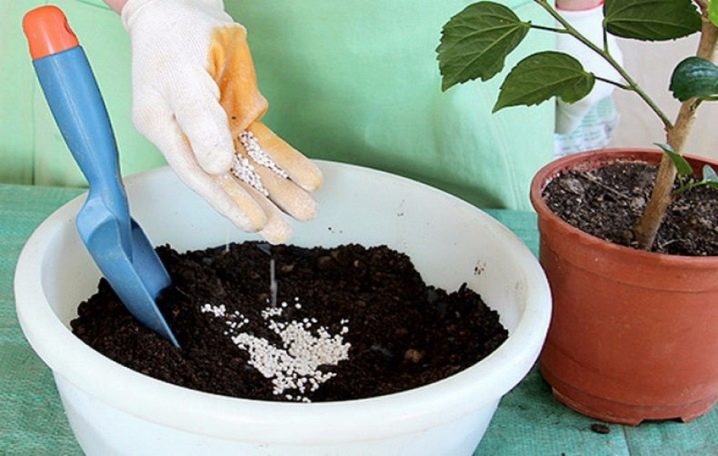
To prepare the soil mixture yourself, you will need to mix one part of sand, leafy earth, turf and add two more parts of humus to them. The output will be a fertile mixture of optimal looseness, lightness and drainage.
Another recipe that can be used to prepare a soil mixture involves mixing 4 parts of turf, 3 parts of leafy soil, one part of sand and one part of humus. To give such a soil mixture better drainage, it is allowed to add 1 part of crushed charcoal. With antibacterial properties, this component will also increase the protective properties of the soil and reduce the risk of root rot. Such a soil mixture is more dense, therefore it is recommended for plants over three years old with a developed root system.
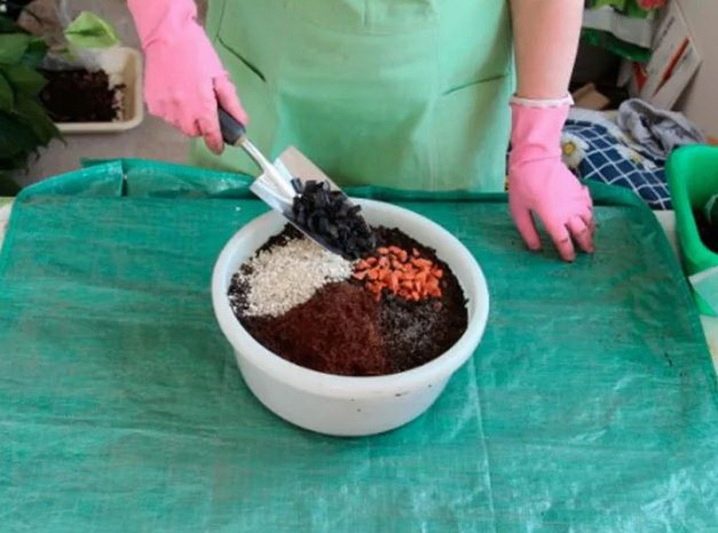
Before boarding self-prepared soil mixture must be disinfected. To do this, use a moderate pink solution of potassium permanganate. Before placing the soil mixture in the pot, drainage is necessarily poured onto the bottom of the container - fragments of expanded clay, pebbles, gravel.
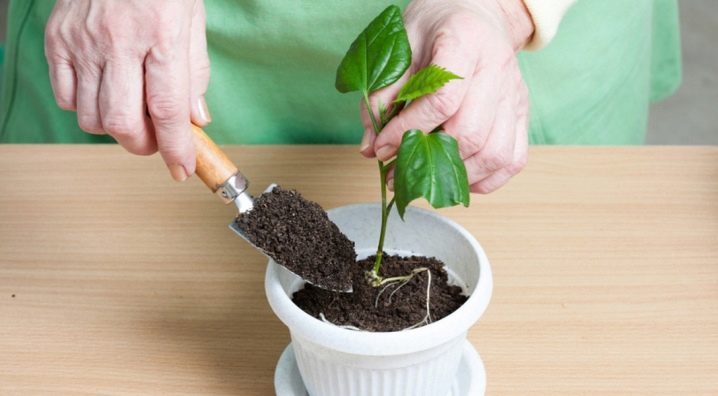
Stable air temperature
Despite the fact that many types of hibiscus are resistant to cold weather, these plants are recommended to be grown at a stable temperature of 25-28 ° C in summer and 12-15 ° C in winter. The tropical origin of these exotics determines their increased requirements for heat. So, when the temperature drops below 20 ° C in the summer, the plant can shed not only flowers, but also foliage. And if the temperature drops below 10 ° C in winter, the flower may die altogether.
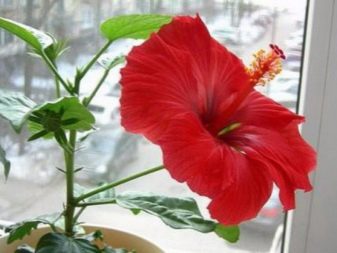

During the flowering period, it is very important to ensure that the thermometer does not rise above 30 ° C.. If this happens, flowering will stop. It should also be borne in mind that flower ovaries in a plant are formed at a temperature of no more than 15 ° C.
To ensure optimal and comfortable conditions in the summer, it is recommended to expose the plants to the balcony. It is important that the difference between night and day temperatures does not exceed 5 degrees. Strong temperature drops and a sharp nighttime cold snap are harmful to hibiscus.
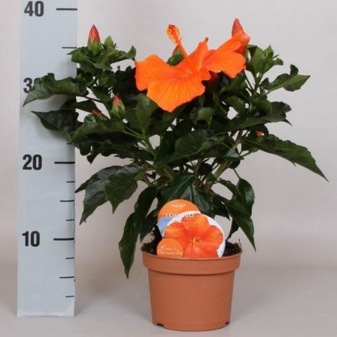
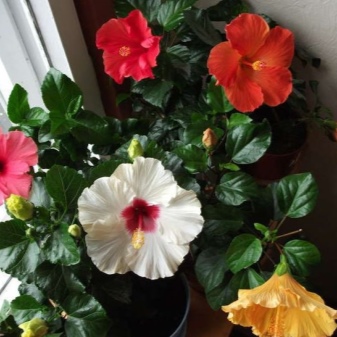
When exposing the plant to the balcony, you must also make sure that so that no direct sunlight falls on the foliage. Otherwise, burns form on the leaves, from which the flower can get sick and even die. To prevent this from happening, the windows on the balcony should be shaded with a newspaper, curtain or special film.
Another important condition that must be taken into account when placing flowers on the balcony is complete absence of drafts. Even a short exposure to a cold breeze on a plant can lead to a sharp weakening of its immunity and even complete death.
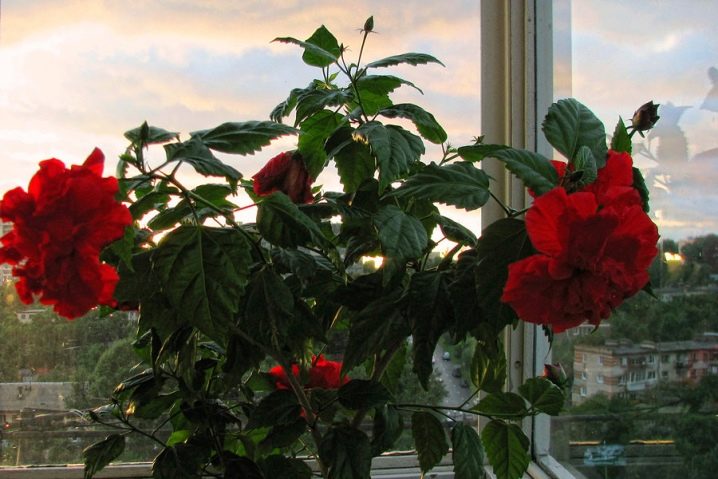
Sufficient moisture level
Air humidity is a very important criterion that plays an important role in the cultivation of hibiscus. In the tropics and subtropics, which are their natural habitat, these plants exist in conditions of high humidity. The optimum humidity level is considered to be 70-80%. If the air in the room where these exotic plants grow is dried up, the foliage of the hibiscus will fade, and the flowers will not be able to fully open.
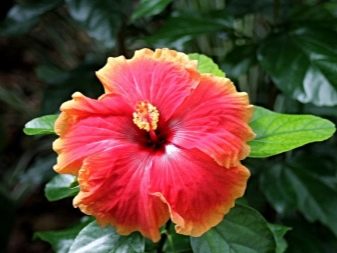
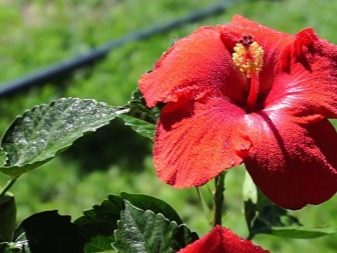
To ensure sufficient air humidity, regular spraying of the flower should be carried out. Representatives of the tropical flora are very supportive of this procedure. However, spraying should be carried out correctly, trying to make sure that water does not get on the buds and flowers. Wet buds and flowers can cause brown spots to form on them and further fall off.
In addition, to maintain a constant high humidity will help wide containers and trays of water, placed next to the pots. Many growers also use household moisturizers.
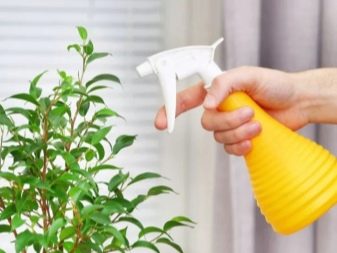
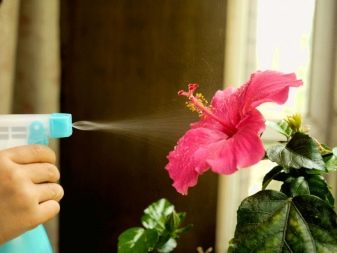
However, in an effort to ensure the most comfortable level of humidity, you should not add water to the sump. It must be dry, otherwise water, absorbing into the lower layers of the soil, can cause the formation of root rot.
Regular feeding
It is necessary to feed the plants according to the recommended schedule. For top dressing it is allowed to use traditional fertilizers for indoor flowers - "Athlete", "Kemira Lux", "Master". They begin to apply fertilizers in the spring, when the exotic enters the phase of awakening and intensive growth, gives foliage and prepares for flowering. During this period, plants are especially in need of phosphorus-potassium supplements.
Also, top dressing is important when hibiscus enter the flowering phase. At this stage of life, they actively spend their energy on the formation of flower ovaries, the development and opening of buds. To feed the plant, you should dilute the top dressing in accordance with the instructions. In its pure form, fertilizers can burn the delicate root system. Fertilizers are applied at the root.
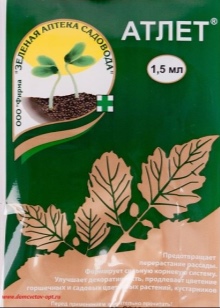
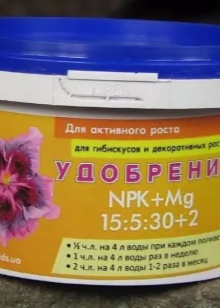
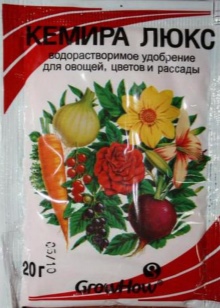
The recommended frequency of feeding is once a month. Some growers, during the period when hibiscus needs to be prepared for winter, feedings are carried out less often or not at all, so as not to stimulate the plant to grow.
Suitable pot
In order for a flower to actively develop and bloom for a long time, it needs a pot of the appropriate size. The diameter of the container should be slightly larger than the diameter of the root ball. A pot that is too tight will hinder the full development of the root system and, as a result, will cause poor hibiscus growth.
Before replanting the plant, the new pot is disinfected. For this, the container is rinsed with boiling water or treated with an alcohol-containing agent or a solution of potassium permanganate. You also need to make sure there are drainage holes in the bottom of the pot.
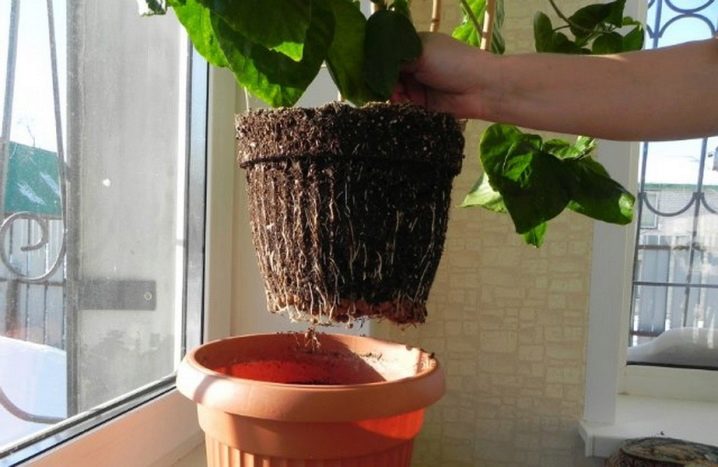
Transfer
With age, hibiscus increases the volume of the root system, as a result of which it needs a transplant. Flowers recently purchased from the store are subjected to the same procedure. In addition, the transplant can be caused by accidental reasons, for example, if the pot is damaged or pests are found in the soil.
Also transplant required by the plant in case of illness... Under such circumstances, it is necessary not only to transplant the plant into a new container, but also to completely disinfect the roots and renew the soil mixture.

Young plants, which are characterized by intensive development, are transplanted every year. Adult specimens that have reached the age of 4 years and older are transplanted every 3-4 years.
To transplant a flower into a new pot, you need to prepare a container and a disinfected soil mixture. The most optimal and plant-friendly way is considered transshipment. This method involves placing the hibiscus in a new pot along with an adhering earthy clod.
In order to transplant the plant with minimal damage to the roots, it is necessary to wet the soil in the pot to the full depth, and then, gently tapping on the walls, carefully remove the flower. After that, with the help of sharp scissors or a knife, unnecessarily long branches are shortened, forming a proportional and beautiful bush. Then the plant, together with a lump of earth on the roots, is placed in a new container, at the bottom of which a layer of drainage and fresh soil mixture with crushed charcoal is previously poured.
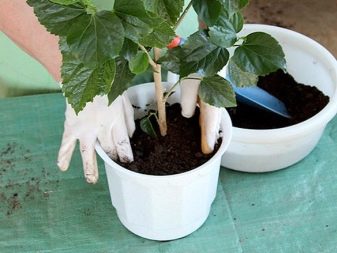
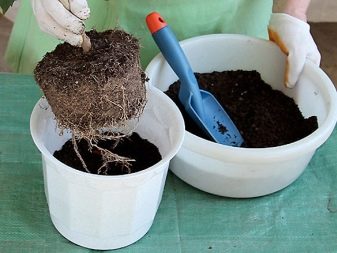
After placing the flower in the pot, fill the voids with fresh soil mixture. When the pot is full, the plant is watered abundantly, and then the surface of the earth is covered with plastic wrap. It will prevent moisture evaporation and provide optimal conditions for plant recovery and adaptation. Remove the film from the pot 2-3 days after transplanting.
During the recovery period, hibiscus needs gentle conditions of detention.. It is desirable that the flower at this time be in a room with very soft lighting, stable temperature and humidity.
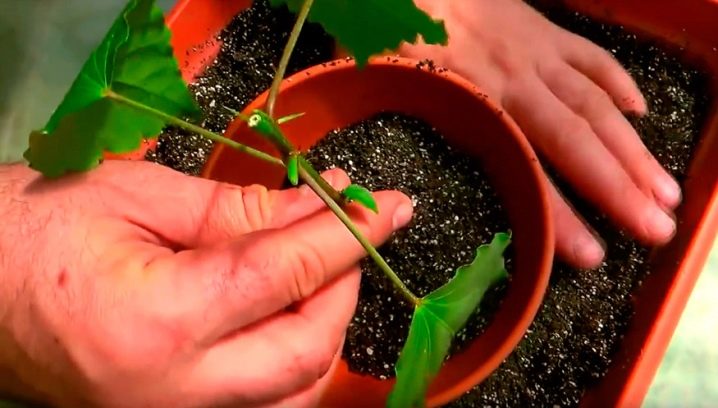
Reproduction methods
One of the indisputable advantages of hibiscus is its simplicity and ease of breeding. This plant can be propagated by cuttings or by dividing the bush. Plus, this exotic crop is easy to grow from seed.
The plant is propagated by cuttings in the summer. To do this, you need to take a shoot from a young shoot. It is important that there are several leaves and buds on the handle. After pruning, the process must be placed in a solution of a root-forming stimulant ("Kornevin").
Then the stalk planted in a container with a mixture of sand and peat, taken in equal proportions, then watered abundantly. From above, the cutting is covered with a glass jar, which will maintain the optimum temperature, air humidity and soil mixture. Rooting usually occurs one month after planting.


It is not difficult to breed this tropical plant by dividing the bush. To do this, the hibiscus is removed from the pot, its roots are divided with a sharp knife, and then the separated parts are planted in the usual way.
Good results are obtained by seed breeding method, which is used from early February to mid-March. To obtain young shoots, the seeds are sown in a tray with a loose nutritious soil mixture, watered abundantly and covered with foil. The seed tray should be in a warm room where the temperature is kept stable at 25 ° C. After the emergence of seedlings, the plantings are thinned out, removing diseased and weak seedlings. Healthy and strong seedlings dive into separate containers.
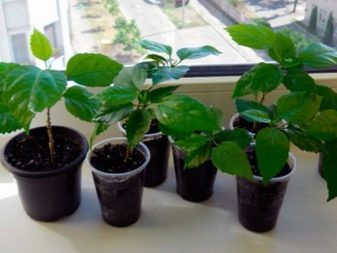
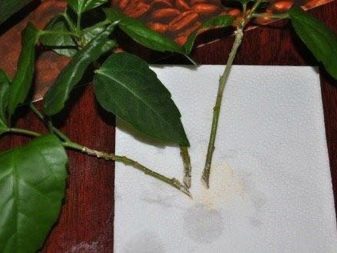
Flowering features
Subject to all the recommendations for care, hibiscus can delight its owner with lush flowering for many months. As a representative of the tropical flora, this evergreen exotic can hypothetically bloom continuously. However, at home, it is almost impossible to recreate the atmosphere of the tropics, so flower growers have to put up with the fact that the plant from time to time enters a dormant phase.
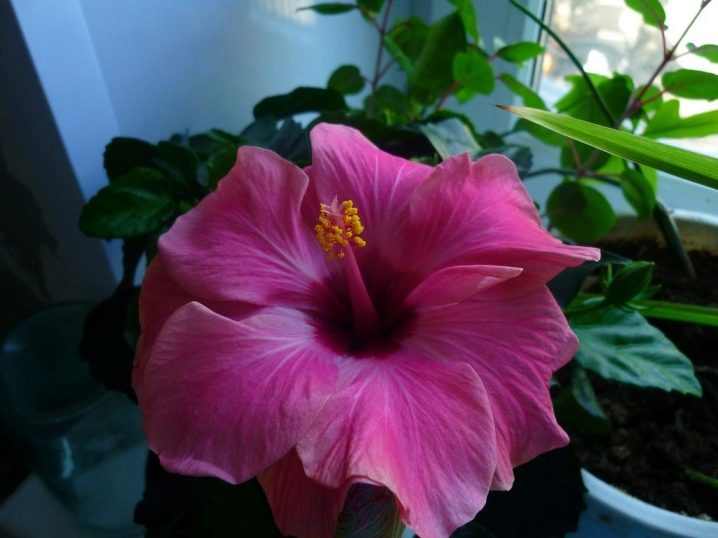
The color and size of large funnel-shaped flowers depend on the plant variety. To date, breeders have bred numerous varieties with simple and double, monochromatic and variegated flowers... In some varieties, the diameter of the flowers can reach 20 centimeters or more.
In the absence of any stimulation, the flowering period in hibiscus begins around the middle of summer and lasts until autumn. Flowers usually open in the morning, and by the evening they wither. Under favorable conditions, from 20 to 50 buds can form on one plant.
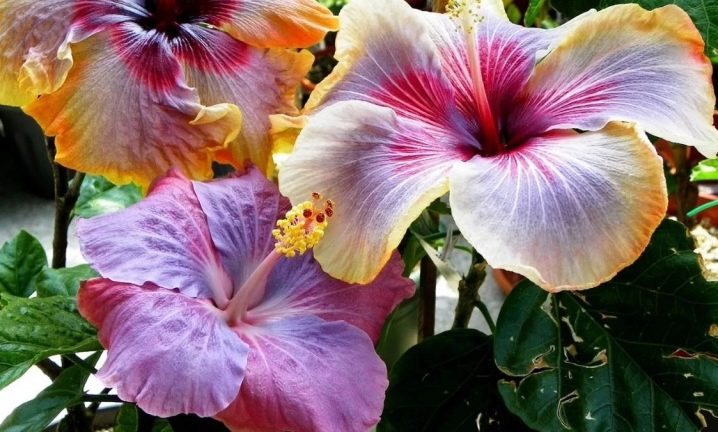
The duration and splendor of hibiscus flowering directly depend on compliance with the rules of care. Timely pruning also allows the "silent" plant to bloom. It is known that the buds of this exotic are formed only on young branches. It is possible to stimulate the growth of young shoots through formative pruning., which is carried out before the plant enters the resting phase. If this moment was missed, it is allowed to carry out pruning before the flower begins to emerge from it.
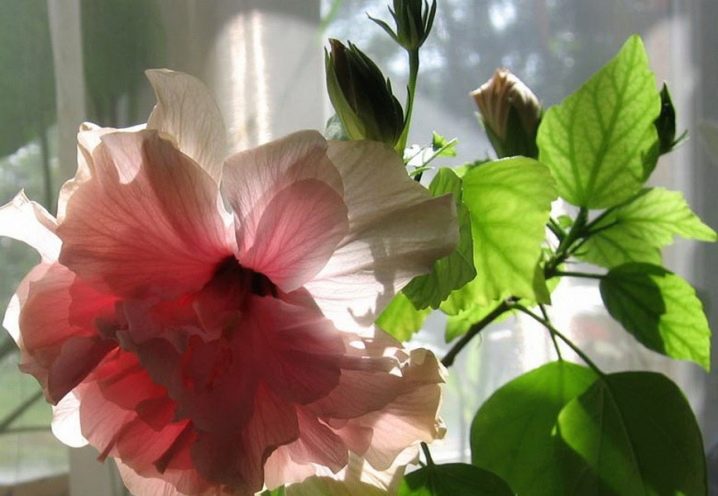
It is important to take into account that flowering greatly depletes the plant, therefore, the flower must be provided with a full and regular winter rest. In the cold season, hibiscus is provided with complete rest, which will allow it to gain strength.
Diseases and pests
Despite the fact that the plant is considered resistant to the development of diseases and pests, many growers still face these problems. So, often hibiscus owners complain that their green pet drops buds and foliage for no apparent reason... This usually occurs due to violations of the rules of care, with insufficient or, on the contrary, excessive lighting. Besides, exposure to drafts and sudden temperature changes also lead to the dropping of buds and leaves of the plant.
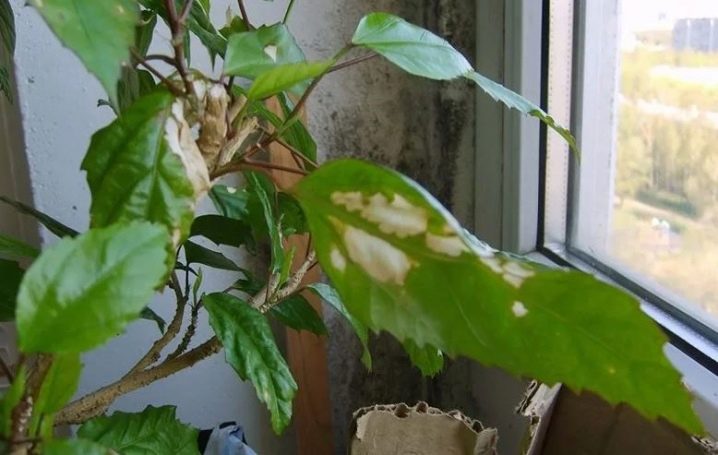
Yellowing of foliage, which growers often regard as a symptom of a disease, often occurs when there is insufficient lighting, a lack of moisture in the air, a lack of iron in the soil, and also when watering with hard water. To avoid this problem, it is necessary to provide the plant with sufficient lighting, carry out regular spraying and feeding. To restore the color of the foliage, it is recommended to use the "Emerald" preparation. Watering should be carried out only with settled or filtered water at room temperature.
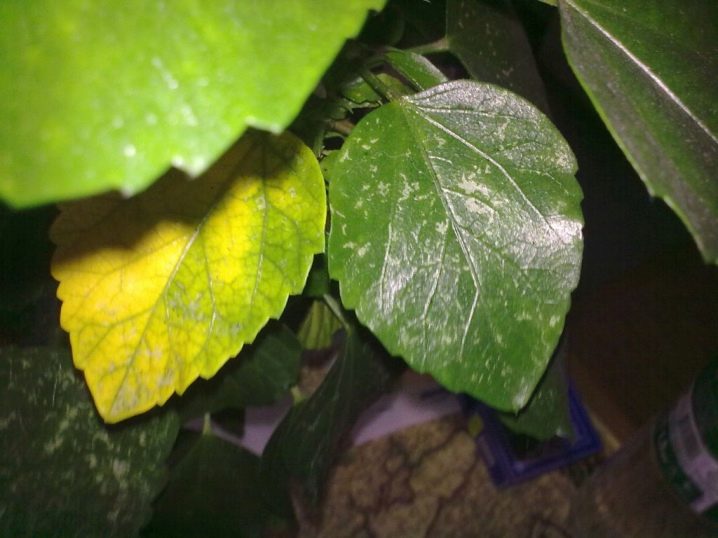
The formation of white spots on the leaves, as well as the appearance of traces of a sticky, viscous substance on the inside of the leaf plates, may indicate plant damage. chlorosiscarried by aphid... Eliminate both the symptoms of the disease and the pest itself in this case will allow the drug "Fitoverm".
The same drug is also used for plant damage. spider mite. The fact that the flower has become a victim of this pest is evidenced by white fluffy accumulations of cobwebs on the leaves, as well as the formation of yellowish dots and spots on the leaf plates. For more effective treatment, the affected flower is illuminated with an ultraviolet lamp and regularly sprayed, since the mite does not tolerate high humidity.
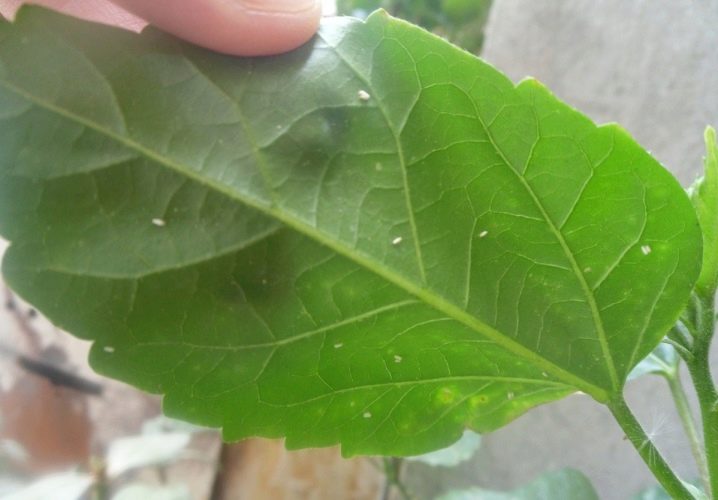
If the leaves of the hibiscus begin to become covered with a white-gray bloom at the top, this may indicate a lesion of the flower. powdery mildew... The causative agent of this disease is a fungus, which can be dealt with with the help of fungicidal preparations. One of the most effective means is "Fundazol".
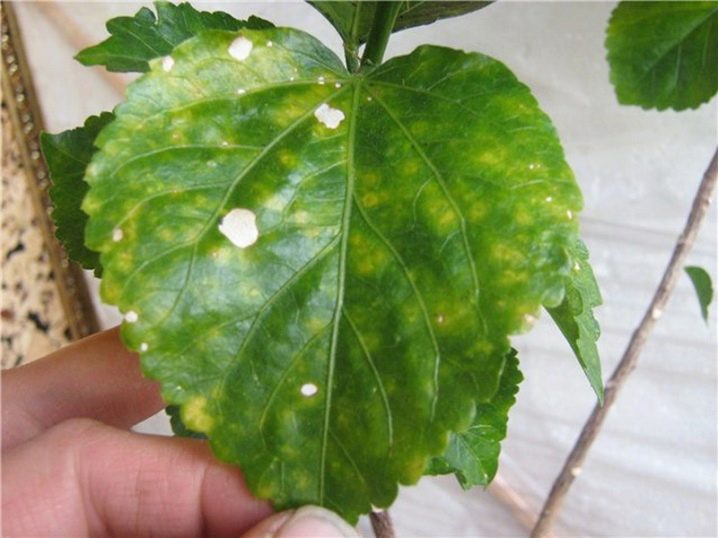
Despite their exotic origins, hibiscus are considered the least whimsical houseplants. These flowers are especially grateful and responsive when provided with the right care and attention. All the work and costs of the grower in this case are more than compensated for by the luxurious and colorful flowering for many months.
For information on how to properly care for hibiscus, see the next video.






























The comment was sent successfully.